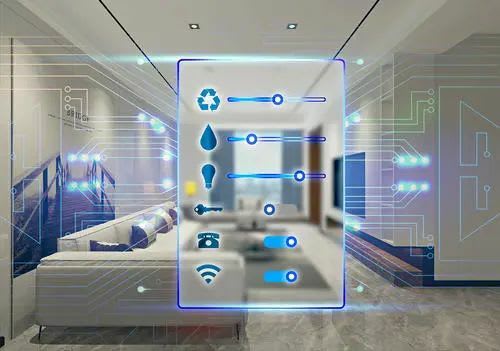A gateway also needs to be added for remote control of Bluetooth devices. Bluetooth basically supports Mesh now, but Bluetooth Mesh is still not as stable as ZigBee when controlling many devices. Considering that most families have a limited number of devices, it is recommended to use Bluetooth Mesh, which is low in cost. This is estimated to be the main reason why Mijia mainly chooses Bluetooth, but the sensor is still mainly Zigbee because of low power consumption.
Of course, it is optimistic about WiFi! First of all, from the perspective of current home networking solutions, WiFi must be the first choice. Whether you use IoT appliances or not, most families will use WiFi; secondly, low-power WiFi modules have been developed and launched, which can compete with ZigBee. The low power consumption advantage of ZigBee is not so obvious, and the possibility of choosing WiFi will greatly increase.
WiFi is undoubtedly the fastest wireless technology at present. With the popularization of WiFi in large public places and office areas, people are thinking about connecting to WiFi wherever they go. The user experience is very good. WiFi has become a must in life. Indispensable stuff. Why are people so reliant on WiFi? The reason is very simple. The transmission signal of WiFi is stable and fast, and the amount of data transmitted can also meet the needs of most industrial users.
However, WiFi also has disadvantages such as poor security, weak stability and high power consumption. In terms of the number of device access, Wi-Fi is also very limited.
As a competitor, Bluetooth technology is often used for short-distance communication, with low power consumption and fast response speed, but it has the disadvantages of limited transmission range, poor anti-interference ability, weak ability to penetrate walls, and the transmission rate and transmission data are difficult to compare with WiFi. .
ZigBee is a short-range, low-complexity, low-power, low-cost two-way wireless communication technology. Higher security, low-rate transmission, long transmission distance, and simpler protocol than Bluetooth. The biggest feature and biggest advantage is that it can self-organize the network, and then link the direct data of each device through the central node. ZigBee is considered to be the future trend of whole-house intelligence.
Compared with WiFi and ZigBee, Bluetooth has many disadvantages. Why do many users still choose Bluetooth?
With the continuous innovation of data transmission and Internet of Things applications, Bluetooth has evolved from the ancient classic Bluetooth to Bluetooth 5.0+. The standards above Bluetooth 5.0 have greatly improved functions such as data transmission bandwidth, transmission range, broadcasting and coexistence. For IoT applications - smart home users and developers, the transmission range will be increased to 4~5 times, which will be a significant advantage of Bluetooth, because it breaks through the distance difficulty of Bluetooth technology in smart home applications.
In addition, compared with WiFi, Bluetooth also has the advantage of low power consumption. Compared with WiFi technology that consumes a lot of power, the advantages of Bluetooth used in smart home products are also very obvious. The pattern of the home furnishing market.
All in all, Bluetooth 5.0+ is a technical specification for the Internet of Things, smart home appliances and smart wearable devices. Bluetooth 5.0 is still ahead of WiFi in these fields. There is still an irreplaceable position in sharing. For the highly intelligent home life of the whole house, ZigBee can access more ports than Bluetooth and WiFi, which is an incomparable advantage.
Therefore, for the question of whether to choose Bluetooth, WiFi or ZigBee, it is still necessary to compare the respective advantages of the modules, and then make a conclusion based on the actual application scenarios and their own needs.
Only by choosing different smart home connection methods according to the equipment and the specific space environment used can the maximum advantages of the connection protocols be brought into play.




Top comments (0)